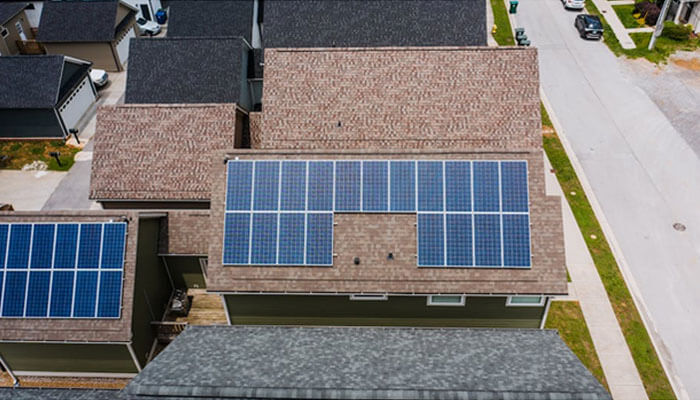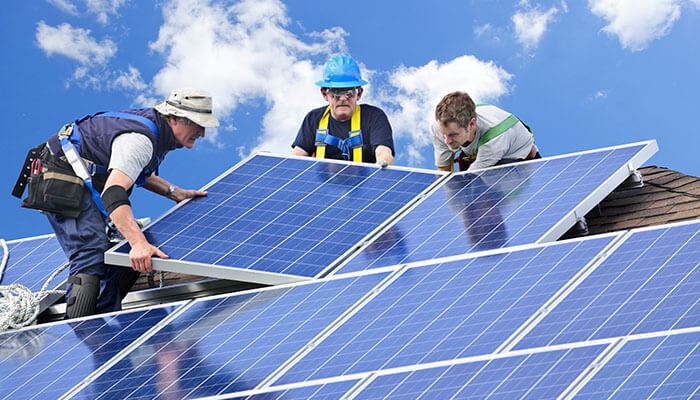Are you curious about the cost of solar panels in 2023? If so, you’ve come to the right place. In a world where renewable energy is gaining momentum, switching to home solar power has never been more appealing.
But how much will it cost you? This guide aims to provide you with up-to-date pricing information, helping you navigate the ever-changing solar market.
Whether you’re an environmentally conscious individual or looking to save money in the long run, this article holds the key to unlocking the potential of solar energy. So, let’s dive in and discover how much solar panels cost.
What Is the Average Cost of Solar Panels?
Solar panels will cost less than $3 per watt on average in 2023. It is a significant drop compared to 2020, when the average solar cell price was about $2.75 per watt.
This price drop is due to technological improvements, grants are available, more competition in the solar business, and the use of solar technology that makes it work better.
Because of all these things, the price of solar panels in 2023 will be lower than in 2019. Many more homes and companies can use solar energy as a power source because they can get cheaper and more effective solar technology. Get affordable solar panels now at Blue Raven Solar.
How Much Do Solar Panels Cost: The Factors to Consider
Several factors influence the cost of solar panels, making it essential to understand the key variables that impact their pricing. These factors include:
System Size
The size of the system is often based on how much energy a home or business needs. A more extensive system can make more power, which makes it a good choice for homes that use a lot of energy or for people who want to offset a big chunk of their energy use. On the other hand, smaller systems are better for places that need less energy or don’t have much roof room.
Most of the time, the cost of a solar panel system is generally estimated per watt. It means that the total cost goes up as the size of the system goes up.
For example, a 5-kW system is usually more expensive than a 3-kW system. But it’s important to remember that the cost per watt tends to decrease as the machine’s size increases. It is because economies of scale often favor more extensive installations, making production and installation easier and faster.
Solar Panel Efficiency
The efficiency of solar cells is a critical factor that can affect how much they cost. Solar panels are usually efficient if they can turn sunlight into power. With the same amount of sun, more efficient panels can make more electricity, which could mean that fewer panels are needed to meet energy needs.
Screens that are more efficient cost more. It is because they use new technologies and materials that make them better at capturing and turning sunshine into energy that you can use. These improvements often require more study, development, and production costs, which add to the price of the panels as a whole.
Installation Costs
The installation cost is a critical factor that significantly affects how much solar panels cost altogether. Even though solar panels have decreased over time, the cost of installing them can change depending on several factors.
A big part of the cost of fixing something is the cost of labor. The labor cost can be affected by things like the type of roof, whether or not extra electrical work is needed, and whether or not the installation is done on the ground. More complicated structures may require special skills or more time, meaning that work costs will be higher.
Material Quality
The quality of materials used in solar panels significantly influences their cost. The components and manufacturing processes in creating high-quality solar panels contribute to their higher price than lower-quality alternatives.
One of the primary components affecting material quality is the solar cells themselves. High-quality solar cells typically have a higher efficiency rate and better durability. These cells are made from superior semiconductor materials, such as monocrystalline or polycrystalline silicon, which exhibit excellent light absorption properties.
Government Incentives
Government incentives play a crucial role in determining the cost of solar panels. These incentives are often implemented to encourage the adoption of renewable energy sources, such as solar power, and can significantly reduce the financial burden for consumers.
One of the most common government incentives is the provision of tax credits or rebates. These incentives allow individuals or businesses to deduct a percentage of their solar panel system costs from their tax liability. The specific amount and eligibility criteria vary by region and may change over time. Tax credits and rebates effectively lower the upfront cost of installing solar panels, making them more affordable for a broader range of consumers.
Net metering policies are another government incentive that can impact solar panel costs. Net metering allows solar panel owners to sell the excess electricity they generate back to the grid. In return, they receive credits or monetary compensation from the utility company. It incentivizes solar panel installation by providing a means for consumers to offset their electricity bills and generate income from their solar power system.
Local Market and Competition
Solar panel prices depend a lot on the local market and how much competition there is. The solar business is different in different places, and market conditions can significantly affect how much solar installations cost.
When solar installers and sellers in a particular area compete with each other, you can keep prices low. When more than one company wants your business, they may offer lower prices, special deals, or discounts to get your business. Competition can help consumers by lowering costs and giving them more choices.
Harness the Power of the Sun
How much do solar panels costs? Solar panel costs have decreased dramatically in the past few years, which is usually projected to continue. The cost of solar panels in 2023 will depend on several factors, such as the location, system size, and components’ quality.
Did you find the information in this article helpful? If so, check out our blog for more helpful resources.



